Automated Fare Collection
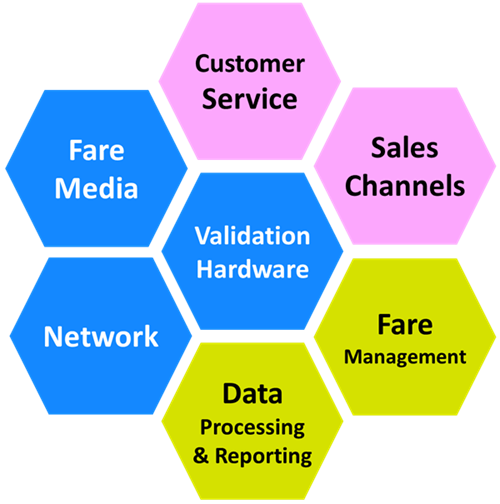
Streamlining Transit: Key Components of Automated Fare Collection Systems Explained
In the fast-paced world of public transit, operational efficiency is key. An Automated Fare Collection (AFC) systems is an important tool to keep buses runing on time, operational costs low, and transit services accessible and user-friendly.
High-Level Architecture
An automated fare collection (AFC) system consists of several interconnected components that work together to streamline the process of collecting and managing transit fares efficiently. Each component of an AFC system is integral to delivering a seamless travel experience, reducing operational costs, and ensuring accurate fare collection and reporting. Together, they form a robust network that supports dynamic fare management and provides valuable insights into passenger behavior and system performance.
Architecture Diagram
Let’s take a look at the following simplified architecture diagram. For convenience, we are going to ignore some details to keep things simple. But we’ve also broken the architecture diagram into three major groups:
- Selling Fares and the sales channels and customer service tools (pink).
- Validating Fares on the bus (blue).
- Managing and Reporting Fares (lime green).
All three groups are critical to a functioning automated fare collection system.
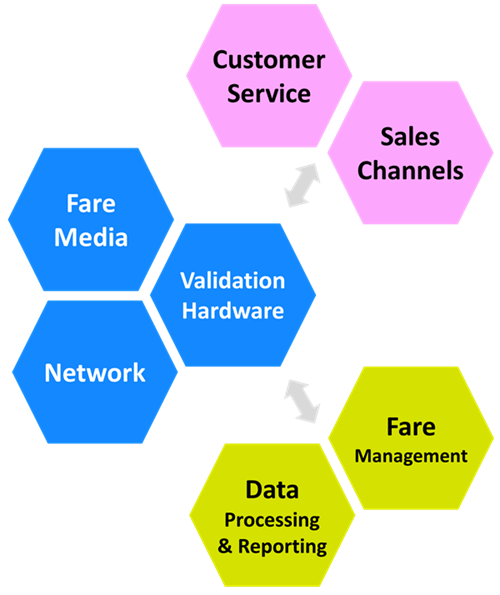
Fare Sales Channels & Customer Service
Fare Sales Channels and Customer Service tools are key parts of a functioning AFC system and are integral to each other. Having a full range of sales channels allows you to get fare products out to to all riders and optimizes convenience and accessibility. Customer service tools allow you to manage sales and customers. All of these features should be mostly, or entirely, cloud-based.
Online & Mobile Sales
Selling fare products online and/or through a mobile app. Riders that are already comfortable with online purchases will likely use self-service fare sales channels. Self-service channels should also offer features like automatic reloading, transaction histories, and receipt downloads.
Customer Service & In-Person Sales
Customer service desks offer riders face-to-face help in purchasing or managing fare products. The AFC system should have a strong suite of customer service tools – such as to look up account details, historical transactions, and take actions to manage accounts.
Third-Party Sales
The AFC system should have robust tools for selling fares via retailers and community service agencies (e.g. job support, income support). This feature is often overlooked, but can represent up to a third of overall fare revenue.
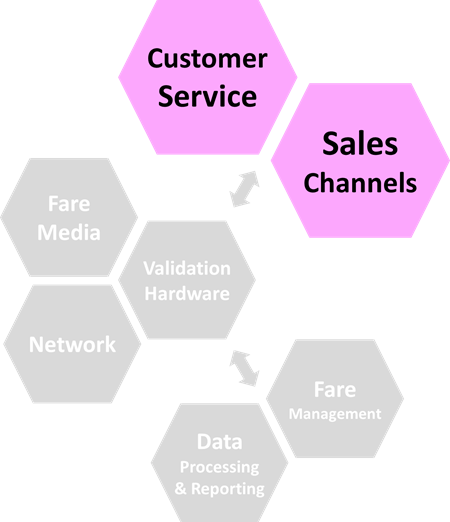
Fare Management & Reporting
Effective fare management and reporting allow transit managers to effectively manage fare products and transit planners to get valuable data to improve transit services. The tools in this category should also be cloud-based.
Fare Management
The automated fare collection system should include features to adjust fare prices, customize fare products, and manage sales channels. It should also have the flexibility to offer sales discounts and promotional fare products. The ability to dynamically manage fare products is critical, especially for more complex situations like seasonal products, retailer discounts, and such. TransitFare Cloud satisfies these requirements and is cloud-based.
Data Processing & Reporting
Efficiently processing the fare validation records from the entire bus fleet is essential. All transactions from buses need to be uploaded to the central automated fare collection system, either in real-time or at day’s end. The automated fare collection system needs to accurately verify each transaction and warehouse it.
This rigorous data handling is critical to maintain the system’s integrity and reliability.
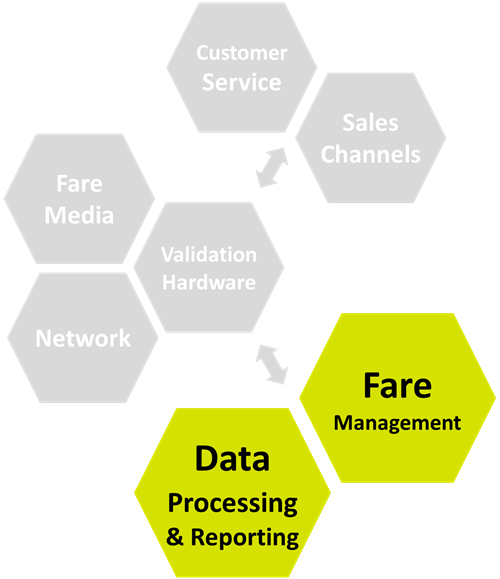
Fare Validation &
Network Communication
There are three essential parts to automatically validate a fare:
- The fare media that the rider has and presents for validation when they board the bus. For example, they might have an RFID smart card, RFID wearable, printed barcode, or mobile ticket.
- The validation hardware at the point of boarding that automatically validates the fare media (e.g. a bus validator).
- A communication device that allows the bus validator to communicate with the central AFC system (e.g. the TF4 Controller IoT which can be a powerful gateway device).
Fare Media
Fare media can range from RFID smart cards, RFID wearables, printed QR code tickets, and/or mobile phones (using either NFC or barcodes). Despite the wide range of fare media types, they do generally have one thing in common – they enable contactless payments right at the point of boarding the bus. They typically require the rider to tap or scan the fare media and then just ride the bus.
Validation Hardware
Validation hardware, such a bus validator and/or QR code ticket scanner, plays a crucial role in automated fare collection systems. These devices automatically validate fare media by processing all the applicable validation rules and provide a right of entry indication. Bus validators need to process each validation very quickly – ideally in less than 1 second. This is to ensure that boardings are quick to keep buses running on time. The validation hardware should also be part of reducing fare evasion, by detecting fare fraud attempts.
Network Hardware
Having reliable network communication hardware is crucial to the functioning of an automated fare collection system. The bus validator needs a gateway device to exchange data with the central AFC system. The network hardware can either be in the bus (which would allow a real-time data exchange) or outside the bus like in the garage (which would allow an end of day data exchange).
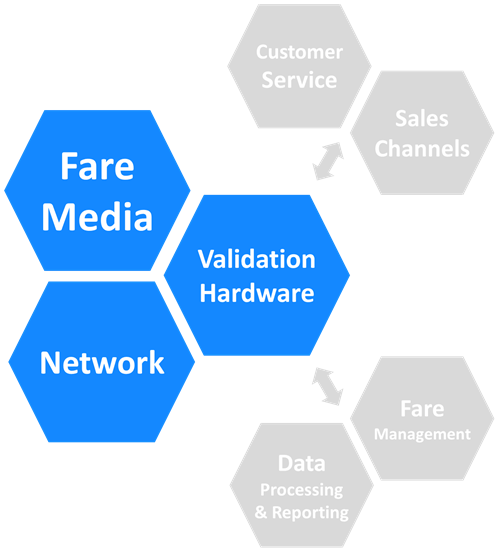
Not All AFC Systems are Made Equal
Automated Fare Collection (AFC) systems can vary significantly between vendors, reflecting differences in system architecture and hardware integration. Some vendors may offer integrated solutions that combine multiple functions into a single platform, while others utilize a modular approach, and integrate components from third-party contractors.
Additionally, some AFC systems may be cloud-based (like TransitFare Cloud), while other systems are on-premise solutions. These variations can impact the system’s functionality, lifetime cost, and maintenance requirements, making it crucial for transit agencies to carefully assess their specific needs against what each vendor’s system offers.
We can Help
TransitFare offers a complete automated fare collection system (AFC) – all managed by TransitFare Cloud and using TF2 Validators. TransitFare’s contactless payment system is easy to use, allowing riders to just ride the bus with a simple tap or scan. Our bus validator will automatically pick and validate the best fare option in fractions of a second. Our AFC system supports all types of contactless payment options such as RFID tags, printed barcodes, and mobile barcodes.
Additional Reading
The following additional reading materials on this topic have been provided for your convenience. Some may be external links and will open the article in a new browser tab. Accessing and utilizing these links is solely at your own risk. We advise you to carefully review their terms and privacy policies before use, as we do not bear responsibility for the content found on these external sites.
